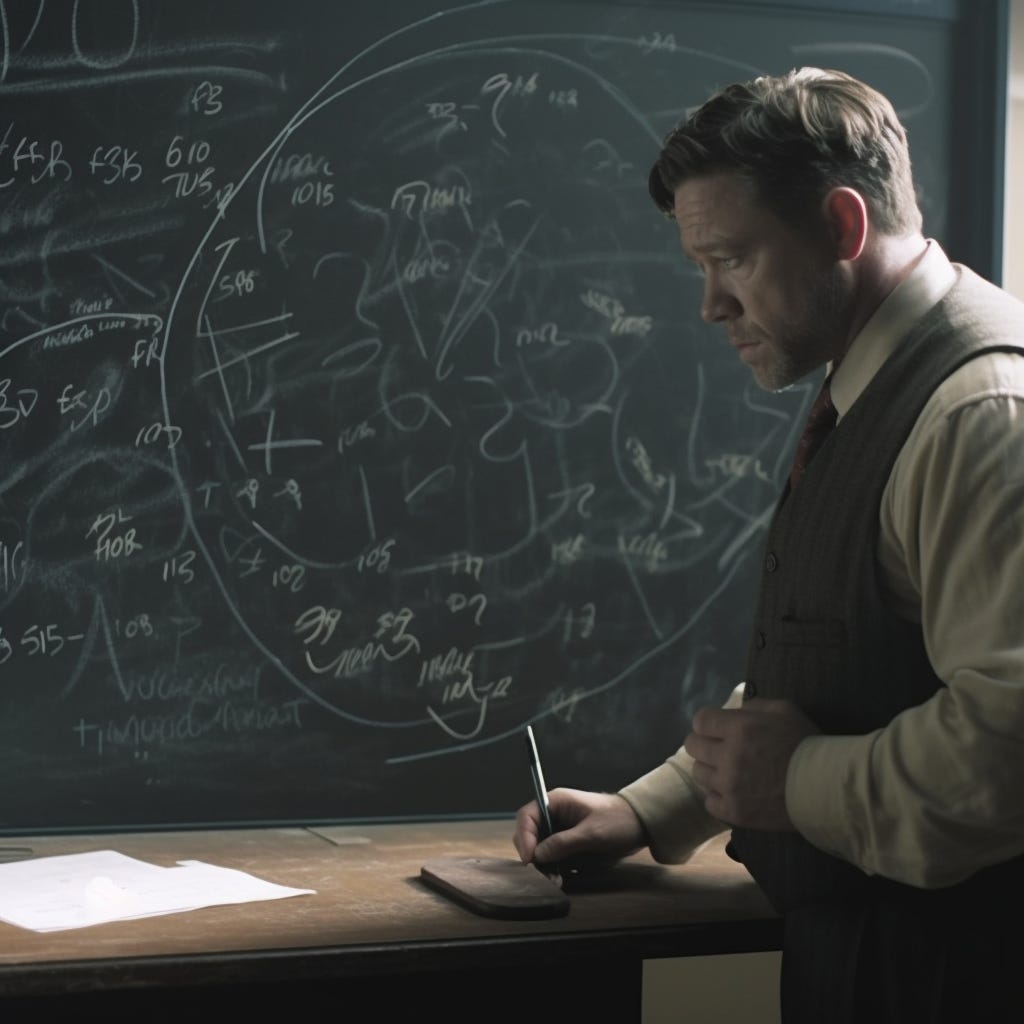A Beautiful Mind: A Psychological Review
Ron Howard's incredibly successful film handles schizophrenia with a gentle touch.
A Beautiful Mind is a 2001 American biographical drama film that chronicles the life of John Nash, a brilliant mathematician who struggles with schizophrenia. The film won four Academy Awards, including Best Picture, Best Director for Ron Howard, Best Adapted Screenplay for Akiva Goldsman, and Best Supporting Actress for Jennifer Connelly.
John Nash, the brilliant mathematician at the heart of the movies was marked by exceptional intelligence from a young age. However, this remarkable intellect coexisted with signs of social awkwardness and emotional detachment.
During his school days a teacher said to him, "You were born with two helpings of brain but only a half a one of heart," this very aptly summarized Nash's complex nature, foreshadowing the lifelong struggle he would face in balancing his intellectual gifts with his mental health issues.
The Path to Brilliance and the Descent into Schizophrenia
Nash's journey from brilliant student to Nobel Prize-winning mathematician was punctuated by the onset of schizophrenia. While his academic pursuits flourished at Princeton University, his personal life became increasingly chaotic.
He neglected personal hygiene, struggled to maintain relationships, and exhibited an intense focus on his mathematical work. His apathy towards people, colleagues, and his diminished emotional expressions were early indicators of his deteriorating mental health.
He also suffered hallucinations and delusions and along with diminished emotional expression these are three of the five characteristics required for a diagnosis of schizophrenia. The other two being disorganized speech and catatonic behavior, things he also displayed occasionally in the film.
The Cold War Crucible: A Potential Trigger for Schizophrenia
The film suggests that two elements may have triggered Nash's schizophrenia. These were him attending university and the background of the Cold War.
Things start to go badly for Nash’s mental health when he starts his studies and thanks to his mathematical skills he’s soon ‘recruited’ by the Department of Defence to break Russian codes.
Hallucinations and Delusions: Navigating a Distorted Reality
Nash's schizophrenia manifested in the form of vivid hallucinations and elaborate delusions. He has a nonexistent roommate named Charles who he bickers with but also confides in too. There’s also Charles’ niece Marcee who plays an interesting role in that she asks him tough questions about his life and doesn’t really take any guff from him.
Finally, there’s William Parcher, a character he believes to be a military intelligence officer, and his superior when he is recruited to help the US in its codebreaking operations against Russia.
These recurring figures represented different aspects of Nash's internal conflict, reflecting his fears, insecurities, and desires.
His primary delusion centers on the aforementioned belief that he was a secret agent for the Department of Defense, entrusted with deciphering coded messages in newspapers and magazines to prevent a Soviet attack.
This delusion provided Nash with a sense of purpose and importance, compensating for his feelings of isolation and alienation. It also put in him great mental strife as he imagines he’s hunted and attacked by foes.
A Journey of Resilience and Triumph
Amidst the challenges of schizophrenia, Nash found love and support in his wife, Alicia. Her unwavering devotion and understanding played a crucial role in helping him manage his illness and pursue his academic career.
This devotion is tested though, particularly in a scene where Nash gets into a fight with Charles. Alicia cowers in the bathroom holding their newborn baby and when Nash enters he begins blabbering that he’s the only one that can see Charles because he’s been injected with a cloating serum where only Nash can see him. Alicia cries ‘there’s nobody here, there’s nobody here’.
Despite the debilitating effects of his condition, Nash managed to achieve extraordinary success, earning a Nobel Prize in Economics for his contributions to game theory.
Introducing Society to Schizophrenia
A Beautiful Mind has been widely praised for its sensitive and nuanced portrayal of schizophrenia. The film avoids sensationalizing the condition, instead focusing on the human cost of mental illness and the challenges faced by those living with schizophrenia and their loved ones. It has raised awareness of the disorder and sparked important conversations about the stigma associated with mental health.
The movie is not merely a story about schizophrenia though; it is a testament to the resilience of the human spirit. It is a reminder that even in the face of seemingly insurmountable challenges, individuals can find strength, love, and purpose.
Nash's story teaches us that with determination and support, even those battling debilitating mental illnesses can achieve remarkable success and contribute meaningfully to society.
The film's enduring impact lies in its ability to humanize mental illness, showing that individuals with schizophrenia are not defined by their condition but by their courage, perseverance, and humanity.
Hi, I’m Paddy. Thanks for reading my article. I’m a counselor, coach and meditation teacher.
If you’d like to contact me regarding a counseling session or about writing, you can contact me here. My different social media channels are here.






